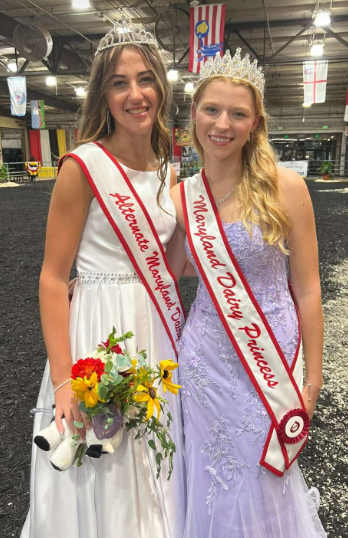Waste water flows through school campus
Not many students at NH may know that we have a waste water treatment plant on site which started around 2006. Only NH, Fallston, Harford Tech, and John Archer have waste treatment plants on school campuses in Harford County.
Every day of the week a worker from the county comes out to check on the plant. These check-ups consist of calibrating the equipment, and testing the water for pH, temperature, dissolved oxygen, and nitrates. The superintendent of Harford County’s waste treatment usually checks on the plant, but if she does not, then a different county worker comes out. On the weekends, however, a contractor comes out to take inventory on the plant.
All of the waste water from the high school, and even the middle school come to the plant. The elementary school’s water will come to the plant once their system fails. There is equipment in the plant ready for the elementary school now even.
Once inside the plant, it opens up into a lab with a wall filled with control panels. Each panel controls the different parts of the cycle that the water goes through.
When the water enters into the building, it goes through an aeration, a decant cycle, and a settling cycle multiple times. The solids that enter the building get filtered out. During aeration, the ammonia in the waste gets broken down, and there is a buoy used in the tank that is used as a dissolved oxygen sensor.
If one were to fall into the aeration cycle, it would be fatal due to the fact that they would not be able to tell up from down once in the tank. Also in the building, there is a blower room which provides all of the air for the aeration cycle.
During the decant cycle, ball like objects block the foam in the tank and the clear liquid goes into the box and then flows into an effluent trough to go to the sand beds outside, and then finally to the UV building.
As for the solids, once they are filtered out, they are pumped to a splitter box which then has sodium bicarbonate added to break down the nitrate and help the bugs in the solids, and then they get filtered into three separate boxes.
These ‘bugs’ are actually bacteria which are already in the solids, but once in the plant, more bugs are added to help the breakdown of the material. Extra bugs are kept in the lab in case there is a shortage due to colder climates.
In the UV (ultraviolet) building, the water is disinfected using ultraviolet rays. Bigger plants used to use chlorine to disinfect, and so did our plant originally. The water will then flow out to the stream once it is clean.
Once the waste water has been filtered and cleaned, the water goes out to the second outfall and then eventually out to the stream. On the property, there are two monitoring wells, and if there is enough water in the wells they will go to the stream.
When the county workers come out to test the water, they test for eColi and ammonia by the stream. Our school usually tests low for both areas, which is exceptionally good.
Every five years the permit for the waste water needs to be renewed and this requires a GPS location on the monitoring wells, which NH’s very own GIS mapping class was able to help with.
Having a waste water treatment plant on campus is unique, and helpful when it comes to releasing water back out to the environment.

















